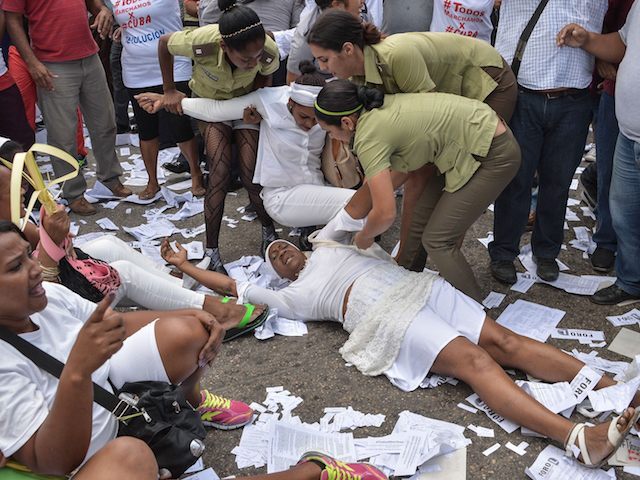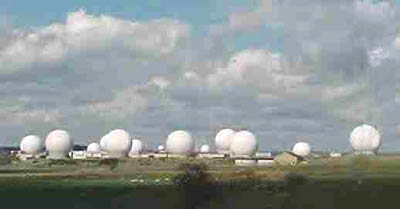The clue is in the details. Dates matter, events matter and travel itinerary matters. Additionally, Hillary and her team are already attempting to limit the scope of questions during the upcoming and scheduled interrogatories.
Was an Asian government reading Hillary Clinton’s emails in February 2009?
WaPo: I continue to be fascinated by the very early chapters of the Hillary Clinton homebrew email saga. For one simple reason: the clintonemail.com server apparently didn’t have the digital certificate needed to encrypt communications until late March 2009 — more than two months after the server was up and running, and after Secretary Clinton’s swearing-in on January 22.
Two questions are raised by this timing: First, why didn’t the server have encryption from the start? And second, why did it get encryption in March, at a time when Clinton should have been extraordinarily busy getting up to speed at State, not messing with computer security protocols?
The simplest answer to the first question is that the lack of a certificate was just a mistake. But what about the second? What inspired the Secretary to get an encryption certificate in March when her team hadn’t bothered to get one in January or February?
The likely answer to that question is pretty troubling. There now seems to be a very real probability that Hillary Clinton rushed to install an encryption certificate in March 2009 because the U.S. intelligence community caught another country reading Clinton’s unencrypted messages during her February 16-21, 2009, trip to China, Indonesia, Japan, and S. Korea.
Thanks to FOIA lawsuits, the State Department has released a few documents from this early period. They show that Clinton began using the clintonemail.com server as early as January 28, 2009, just after her inauguration. Other messages from Cheryl Mills used the server in early February.
Even as she kept her homebrew server, Clinton and her staff were fighting to hang on to their Blackberries, just like President Obama. That provoked resistance from the State Department’s top security official, Assistant Secretary Eric Boswell. On March 2, he sent the Secretary a memo — “Use of Blackberries on Mahogany Row” —declaring that “the vulnerabilities and risks associated with the use of Blackberries in Mahogany Row [the State Department’s seventh floor executive offices] considerably outweigh their convenience.”
On March 11, at a staff meeting, Clinton seemed to throw in the towel on her Blackberry, telling Boswell that she had read the memo and “gets it.” We know this from correspondence among Boswell’s staff.
But what’s fascinating and troubling is something else in the correspondence. One staff message says that during Clinton’s conversation with Boswell, “her attention was drawn to a sentence that indicates we [the diplomatic security office] have intelligence concerning this vulnerability during her recent trip to Asia.”
I am struck by the mix of delicacy and insistence in that phrasing. It seems likely that Clinton’s attention was drawn to that sentence because the intelligence was about Secretary Clinton’s own communications security, something a discreet diplomat would not want to say directly in written communications. Clinton certainly acted like the intelligence concerned her. She asked Boswell to get her “the information.”On March 11, Boswell is told by his staff that the report is already on the classified system, and he is reminded that he had already been briefed on it. Presumably he conveyed it to Clinton soon after March 11.
Eighteen days later, Clinton’s server acquires a digital certificate supporting TLS encryption, closing the biggest security hole in her server.
I suppose this could all be coincidence, but the most likely scenario is that the Secretary’s Asia trip produced an intelligence report that was directly relevant to the security of Clinton’s communications. And that the report was sufficiently dramatic that it spurred Clinton to make immediate security changes on her homebrew server.
Did our agencies see Clinton’s unencrypted messages transiting foreign networks? Did they spot foreign agencies intercepting those messages? It’s hard to say, but either answer is bad, and the quick addition of encryption to the server suggests that Clinton saw it that way too.
If that’s what happened, it would raise more questions. Getting a digital certificate to support encryption is hardly a comprehensive response to the server’s security vulnerabilities. So who decided that that was all the security it needed? How pointed was the warning about her Asia trip? Does it expand the circle of officials who should have known about and addressed the server’s insecurity? And why, despite evidence that Clinton was using the server in connection with work in January and February, did Clinton turn over no emails before March 18?
We don’t know the answers to those questions, and they may have perfectly good answers. But they do suggest that the investigation should be focusing heavily on who did what to clintonemail.com in January through March of 2009.
State Department: Don’t Ask Hillary Aides About Classified Info in Lawsuit
DailyBeast: Lawyers object to any attempt to ask Huma Abedin, Cheryl Mills, and others about how information was handled—and are dead set against Clinton testifying.
Lawyers for the State Department want to limit the types of questions that a watchdog group can ask former aides to Hillary Clinton, and potentially the former secretary of state herself, about her creation and use of a private email system while she was in office.
The department asked a federal judge Tuesday night to grant “limited discovery” to Judicial Watch, a conservative watchdog group that wants to depose some of Clinton’s closest associates and staffers.
State’s lawyers proposed that the group only be allowed to ask questions about “the reasons for the creation of the clintonemail.com system,” and not about how classified information was handled on the system or any issues related to protecting it from hackers.
The State Department lawyers also indicated that they may object to any attempt to depose Clinton. Judicial Watch hasn’t proposed to depose the Democratic presidential front runner, but has said it wants to interview Huma Abedin, one of Clinton’s closest aides and a personal friend; Cheryl Mills, Clinton’s former chief of staff; Patrick Kennedy, a senior State Department official; and others who were involved in discussions among State Department officials about Clinton’s email usage.
Based on the schedule that both State Department and Judicial Watch lawyers have proposed, interviews with ex-Clinton aides could begin in the weeks heading into the Democratic presidential nominating convention in July.
The questions that State wants to put off limits have been at the center of multiple inquiries by inspectors general and the FBI about how Clinton handled classified information and whether she or her staff violated any laws or rules about maintaining government records. Investigators have found that some of the emails in Clinton’s server contained classified information when they were sent, though she has maintained they were never marked as such.
The lawsuit brought by Judicial Watch is one of dozens by activists and journalists seeking information about Clinton’s private email system, which was run out of a “homebrew” server in her house in New York. It’s unusual, however, in that it’s only one of two cases in which a federal judge has agreed to allow discovery, including potential examination of government documents and interviews with current or former officials.
Judicial Watch brought the suit in an effort to obtain information about the government’s employment agreement with Abedin, a key member of Clinton’s inner circle who simultaneously held four jobs for a six month period in 2012: at the State Department, at the Clinton family’s foundation, in Hillary Clinton’s personal office, and at a private consulting firm with connections to the Clintons.
The group also wants to depose Bryan Pagliano, who reportedly maintained Clinton’s email server. Pagliano has been granted immunity in exchange for his cooperation with FBI investigators, and State’s lawyers asked the judge to prevent Judicial Watch from asking questions about the bureau’s investigation.
Meanwhile, FBI Director James Comey told reporters in Buffalo on Monday that he was in no rush to complete the investigation, which he said could extend past the Democratic and Republican conventions.
“The urgency is to do it well and promptly,” Comey said. “And ‘well’ comes first.”
Clinton said Sunday on NBC News’ “Meet the Press” that FBI agents had yet to contact her for an interview but that she is willing to sit down with them.
The State Department had fought to keep Judicial Watch from conducting discovery at all, arguing that the group sought to expand the question about Abedin’s employment situation “into a far-ranging inquiry” about whether records laws had been broken.
But U.S. district judge Emmet Sullivan expressed his frustration in a hearing last February over the fragmentary way that new revelations and disclosures about Clinton’s email system have come to light. He concluded that discovery, which is rare for cases like this one brought under the Freedom of Information Act, was warranted.
“This is a constant drip, a declaration drip. That’s what we’re having here, you know, and it needs to stop,” Sullivan said, before ordering that limited discovery could proceed.
The lack of a complete explanation for why Clinton had set up a private email system gave rise to “a reasonable suspicion of bad faith” on the part of State Department officials, who may have been trying to thwart transparency laws, Sullivan said. There was no question that senior officials working for Clinton knew she was using a private email server, he noted.
“It appears that no one took any steps to ensure that agency records on Clintonemail.com were secured within the State Department’s record systems” in order to respond to records requests in the future, Sullivan said. “How in the world could this happen?”
At one point, Sullivan asked rhetorically, “Was the system created to accommodate the former secretary? Was the system created to thwart [Freedom of Information Act] compliance?” Until those questions are answered, he said, the court can’t determine whether the government had fully and adequately searched for records in the underlying case.
“We’re talking about a cabinet-level official who was accommodated by the government for reasons unknown to the public,” Sullivan said.
In the other case in which a judge has granted discovery, U.S. district court judge Royce Lamberth ruled last week that “where there is evidence of government wrong-doing and bad faith…”
That case, which was also brought by Judicial Watch, is about government talking points that officials crafted following the attacks on the U.S. consulate in Benghazi, Libya.



 Bejucal
Bejucal